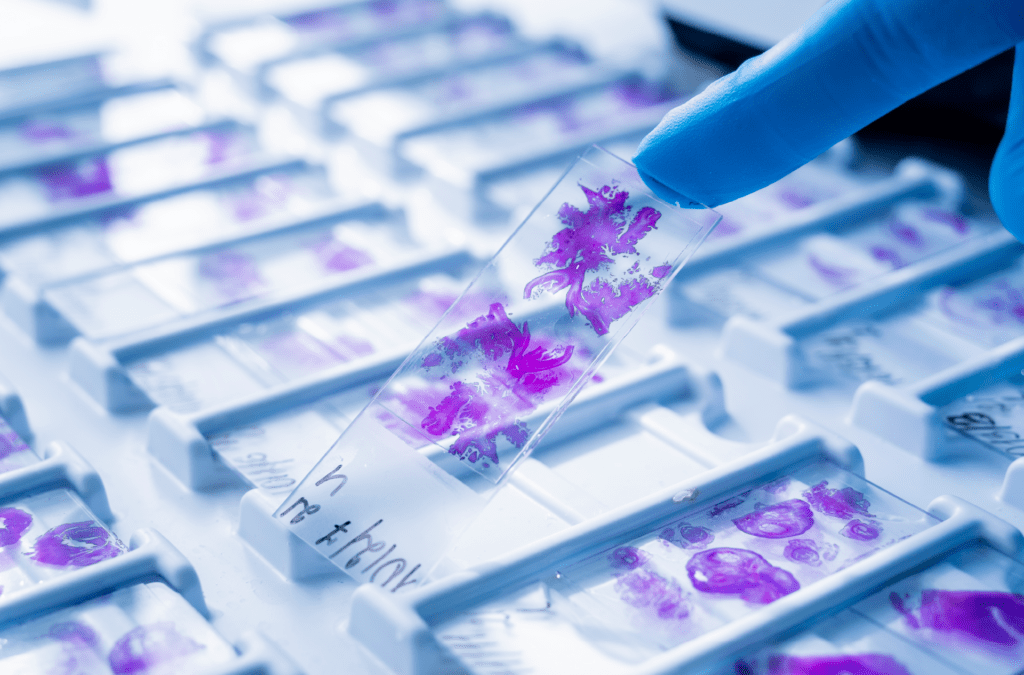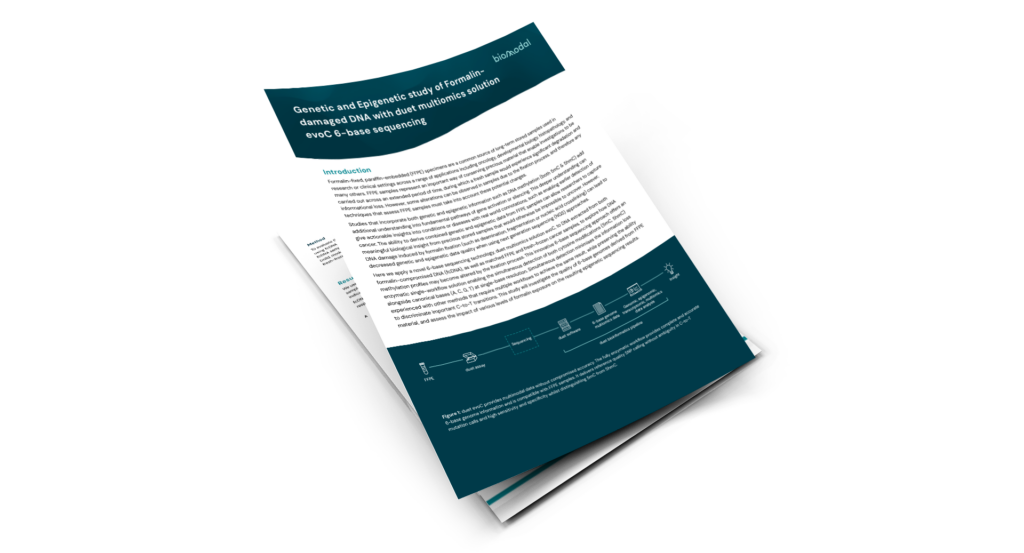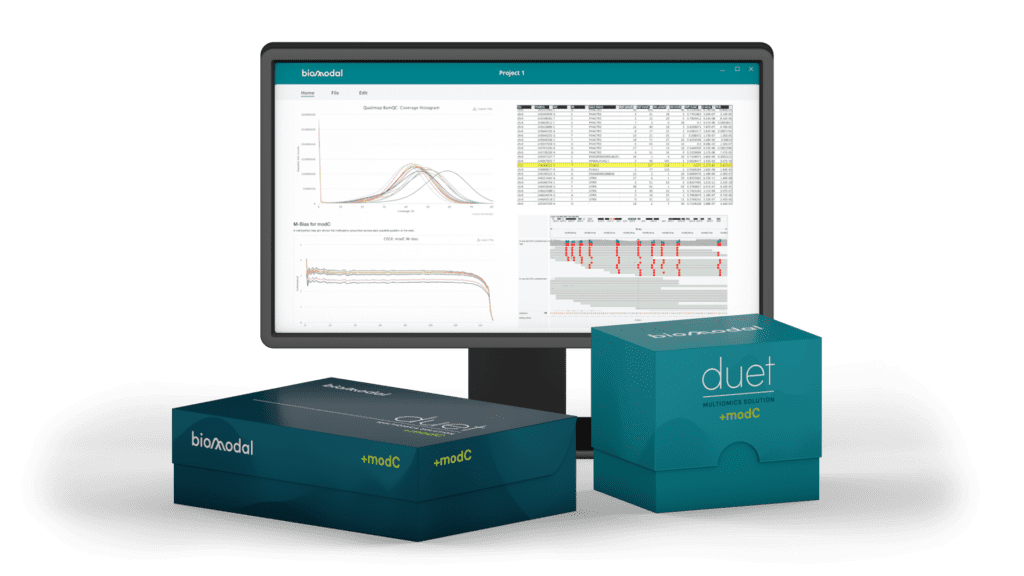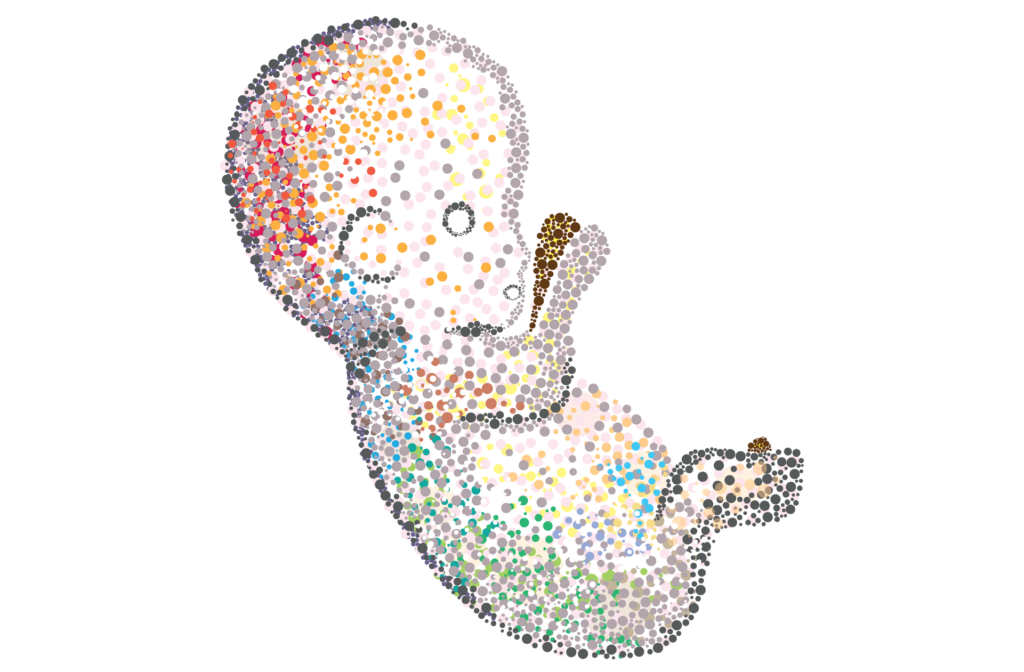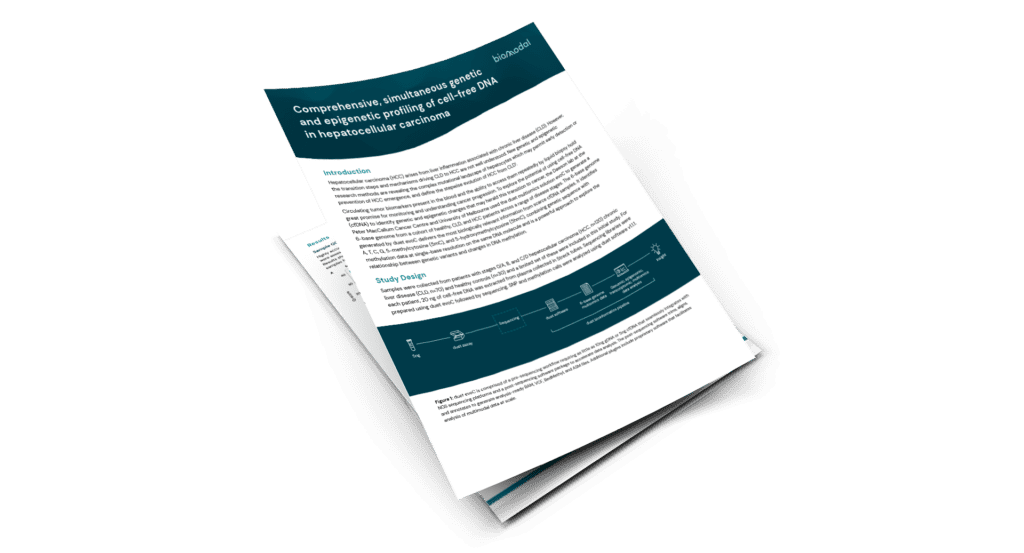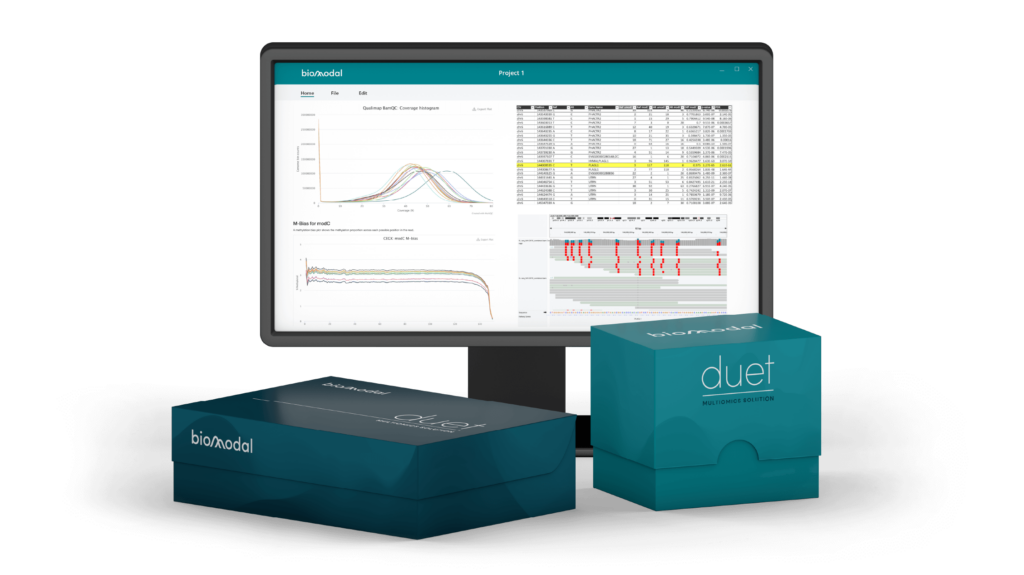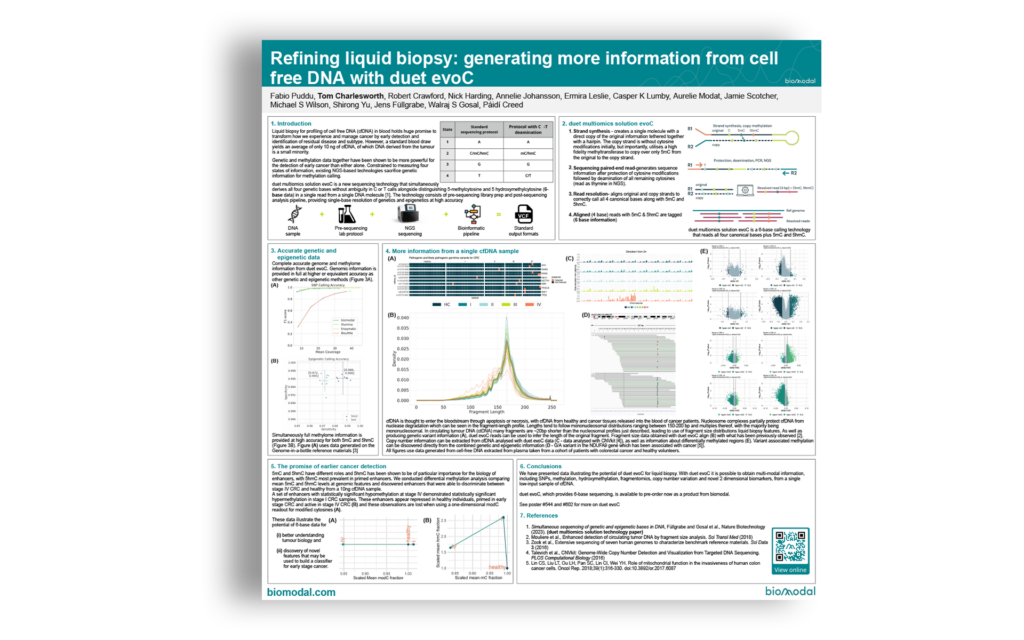Resources
Resource types
- Webinar
Join Dr Emily Hodges, assistant professor of biochemistry at Vanderbilt University, to learn more about how the Hodges Lab utilises 6-base genome to investigate the dynamics of enhancer DNA methylation during cellular differentiation.
- Blog post
Formalin-Fixed Paraffin-Embedded (FFPE) tissue plays a critical role in histopathological diagnosis, and it is particularly valuable in the diagnosis of diseases like cancer.
- Technical note
FFPE cancer samples are an incredibly important and clinically relevant information source for directly studying the causes and consequences of the disease. This technical note shows how duet evoC can identify DNA methylation markers from FFPE samples.
- Poster
Liquid biopsy for profiling of cell free DNA (cfDNA) in blood holds huge promise to transform how we experience and manage. But can you get More information from limited DNA: simultaneous measurement of genetics, 5hmC and 5mC in cell-free DNA?
- Poster
The combinatorial power of genetics and epigenetics is vital to understanding biology in healthy and cancerous states.
- Blog post
The 6-base genome ads 5-methylcytosine (5mC) and 5-hydroxymethylcytosine (5hmC) to the traditional nucleobases of adenine (A), cytosine (C), guanine (G), and thymine (T).
- News article
We are delighted to present BaseSpace Sequence Hub data for duet multiomics solution +modC.
- Blog post
RNA sequencing (RNA-seq) has become immensely popular and indispensable in modern biological research. We look at the considerations and challenges of this technology.
- Application note
Results from the Dawson lab at the Peter MacCallum Cancer Centre and University of Melbourne suggest that profiling cfDNA with duet evoC would be very useful for the analysis of liquid biopsy samples to generate biologically relevant data for exploring early detection and disease progression in HCC.
- Application note
Generating multiomic data from as little as 5ng of cfDNA that can be used to identify SNPs, CNVs, differentially methylated regions (DMRs), and variant associated methylation (VAM). Using these techniques, methods to identify new potential biomarkers and fragment length profiles are also discussed.
- News article
Novel solution - duet evoC - distinguishes 5-methylcytosine (5mC) and 5-hydroxymethylcytosine (5hmC) revealing unprecedented insights into current and future states of disease using one 5ng DNA sample
- Poster
Liquid biopsy for profiling of cell free DNA (cfDNA) in blood holds huge promise to transform how we experience and manage cancer by early detection and identification of residual disease and subtype. However, a standard blood draw yields an average of only 10 ng of cfDNA, of which DNA derived from the tumour is a small minority.

